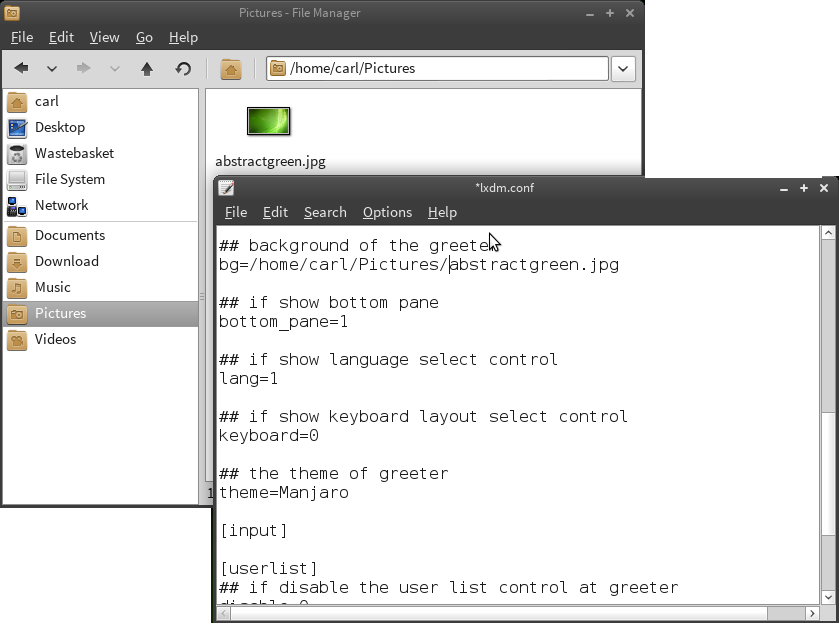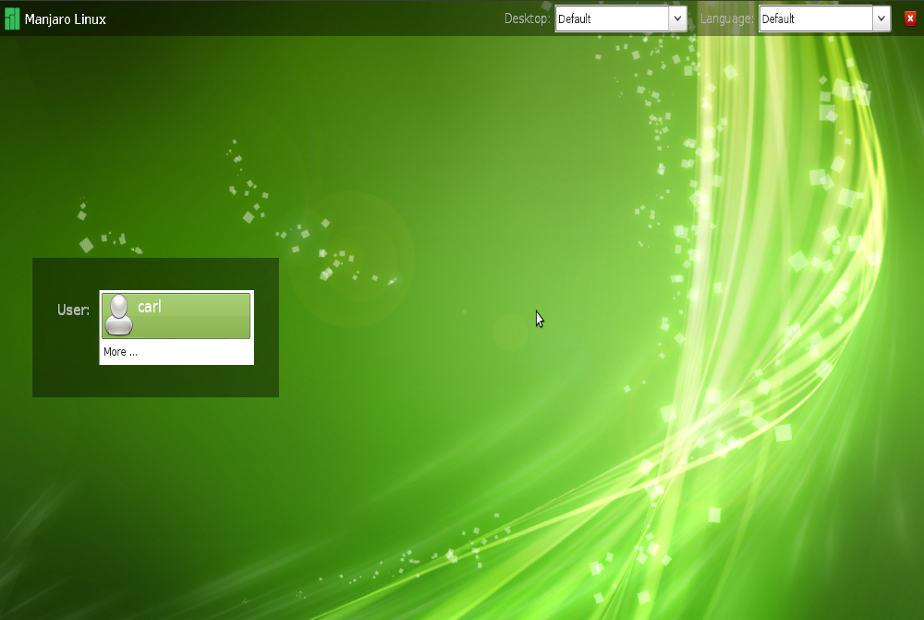Translations:LXDM Configuration/3/en
Views
Actions
Namespaces
Variants
Tools
Optional: Enable Timeout Auto-Login
In addition to bypassing the login screen completely, it is also possible to be automatically logged in after waiting a certain period of time as well. In this instance, after booting into the login screen, it will wait for a set period of time before automatically logging you in. This is set in the following section, located near the top of the configuration file:
## uncomment and set timeout to enable timeout autologin, ## the value should >=5 #timeout=10
- Remove the hash ('#') from the beginning of timeout= to activate it, and
- Set the number of seconds to wait at the login screen, if different from the default value of 10. As stated above the command, the number of seconds specified must be no less than 5.
As an example, LXDM has been configured below to enable timeout auto login after waiting 30 seconds:
## uncomment and set timeout to enable timeout autologin, ## the value should >=5 timeout=30
Once your amendments have been completed, you can save your changes and close the configuration file by:
- nano: Press CTRL and 'x' to exit, 'y' to save, and <enter> to finish, or
- gedit: Select the 'save' option and then close the window.
Reboot your system for the changes to take effect.
Disable Auto-Login
To restore the login screen, edit the LXDM configuration file once again and comment out the lines beginning with autologin= and session=. An example has provided below.
[base] ## uncomment and set autologin username to enable autologin #session=/usr/bin/startxfce4 ... ## default session or desktop used when no systemwide config #session=/usr/bin/openbox
Once your amendments have been completed save your changes and close the configuration file by:
- nano: Press CTRL and 'x' to exit, 'y' to save, and <enter> to finish, or
- gedit: Select the 'save' option and then close the window.
Changing The Background Image
Once your chosen desktop environmet has been downloaded (e.g. a .png or .jpg image file), it can be set in the following section, located near the top of the configuration file:
## background of the greeter # bg=/usr/share/backgrounds/default.png
As illustrated, it will be necessary to specify the exact location of the background image to use. Although it is possible to copy the new background images to the existing backgrounds folder using Root privilages, in this instance a new folder location will be specified:
|
| As an example, the author has activated the ability to set backgrounds, and used a background image (abstractgreen.jpg) located in their Pictures folder. Again, note the correct use of capitalisation where required (e.g. Pictures):
/etc/lxdm/lxdm.conf ## background of the greeter bg=/home/carl/Pictures/abstractgreen.jpg Once your amendments have been completed, you can save your changes and close the configuration file by:
The change will be immediate, and may be viewed by simply logging out. |

